Imagine enjoying a peaceful evening in the comfort of your cozy home, only to find yourself constantly scratching and noticing tiny, persistent pests hopping around. Yes, we’re talking about those dreaded creatures: fleas. These minuscule, blood-sucking insects have a knack for infesting our living spaces and causing immense irritation to both humans and pets alike.
The problem of fleas infesting your home can quickly escalate if left unaddressed. Their rapid reproduction cycle and ability to survive in various environments make them a formidable foe.
Not only can fleas cause relentless itching and discomfort due to their bites, but they can also transmit diseases and trigger allergic reactions in sensitive individuals. It’s imperative to address this issue promptly.
While it’s true that fleas are more prevalent during warmer months—often referred to as “flea season”—they can be present year-round, especially in homes with pets. Delaying flea treatment will only result in more widespread infestation and create a lingering headache for you and your furry companions.
In this comprehensive guide, we will explore effective strategies to eliminate fleas from your home entirely. From preventive measures to treating your pets and the importance of meticulous house cleaning routines—rest assured, we’ve got you covered!
Description and life cycle of fleas
Fleas, those pesky little critters that like to make themselves at home on our beloved pets, other animals, and in our cozy abodes, belong to the insect order Siphonaptera. These minuscule insects feed on the blood of mammals and birds, using their incredibly sharp mouthparts to pierce the skin and indulge in a blood feast. The most common type of flea encountered by pet owners is the cat flea (scientifically known as Ctenocephalides felis).
Understanding the life cycle of these tiny tormentors is crucial in effectively combating them. Fleas undergo complete metamorphosis, which means they progress through four distinct stages: egg, larva, pupa, and adult.
After an adult female flea feasts on blood from your pet, she will lay her eggs directly on your furry friend’s skin or in their bedding. These minuscule eggs are barely visible to the naked eye and tend to scatter all over your home — making it more challenging to eradicate these fleabag invaders.
Common signs of flea infestation
Now that we have a basic grasp of a flea’s life cycle let’s talk about how you can identify whether these miniature menaces have made themselves at home in your humble abode or worse yet — on your beloved pet! One telltale sign is discovering small red bites that cause incessant itching on either you or your furry companion.
These bites are commonly found around ankles or lower legs for humans but often occur around the base of tails, behind ears, or along bellies for pets. Another indication that fleas may be present is observing excessive scratching from your pet accompanied by frequent grooming attempts such as licking or biting certain areas of their fur.
Flea waste also plays a role in identifying an infestation; it appears as tiny specks resembling black pepper or dark, comma-shaped dirt flecks on your pet’s skin or bedding. If you place these specks on a damp paper towel and they turn red, it is an indication that you have fleas present.
To confirm the presence of fleas, you can use a fine-toothed flea comb to comb through your pet’s fur, paying close attention to the base of the tail and behind their ears. Flea combs are designed to dislodge adult fleas and collect flea debris.
Speaking of debris, if you notice tiny white particles resembling grains of sand in your pet’s bedding or resting areas, those may very well be flea eggs or remaining eggs waiting to hatch into more blood-thirsty pests. Now that we understand how these tiny troublemakers operate and how to spot their presence with our keen observational skills, it’s time to roll up our sleeves and embark on a mission to rid our homes and pets from these unwelcome guests.
Prevention is Key
Maintaining cleanliness and hygiene in your home
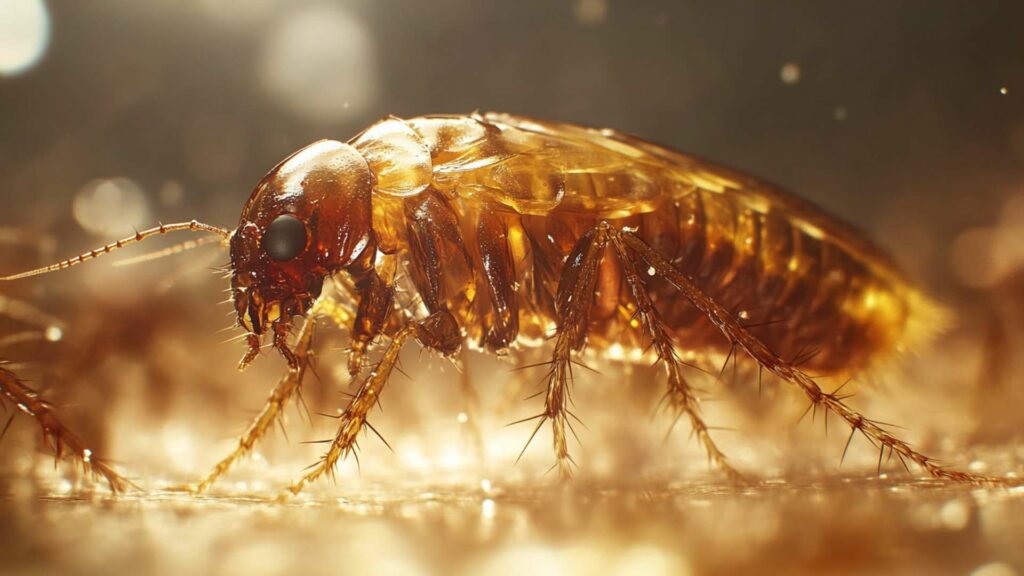
To tackle the pesky problem of fleas, it’s crucial to maintain a clean and hygienic environment in your home. These tiny bloodsuckers thrive in dirty and cluttered spaces, so keeping things neat and tidy is essential.
Start by decluttering areas where fleas might hide, such as behind furniture or under rugs. Not only will this make it easier to spot potential flea hotspots, but it will also ensure that you have clear access for cleaning.
Regular vacuuming and mopping floors
Vacuuming is your secret weapon against fleas! These resilient creatures can lay eggs almost anywhere, even in the deepest corners of your carpets or rugs.
Regularly vacuuming not only helps remove adult fleas but also eliminates flea eggs and larvae from your home. Pay extra attention to areas where your furry friend spends most of their time, like their favorite napping spot or near their pet bed.
Remember to empty the vacuum bag immediately after cleaning to prevent any hatching fleas from making a comeback. Mopping floors is another effective way to combat these pests.
Flea larvae often fall off their hosts onto the floor, where they continue their development into adulthood. By regularly mopping with warm water and a mild detergent, you can wash away any hidden flea waste or immature fleas lurking on hard surfaces.
Washing bedding and pet accessories frequently
Fleas love nothing more than cozy spaces like pet bedding to lay their eggs and multiply rapidly. To keep them under control, make sure you wash all bedding materials regularly using hot water.
This will help kill the fleas or any existing fleas or eggs present on the fabric. Don’t forget about other accessories such as blankets, soft toys, or even your own upholstery where fleas can hide.
Properly cleaning and drying these items at high temperatures will ensure that all the fleas and their offspring are eradicated. When washing your pet’s bedding, consider adding a small amount of dish soap to the laundry detergent.
The dish soap acts as a natural flea repellent and helps eliminate any remaining fleas. Be sure to wash these items separately from your own laundry to avoid cross-contamination.
Keeping outdoor areas tidy
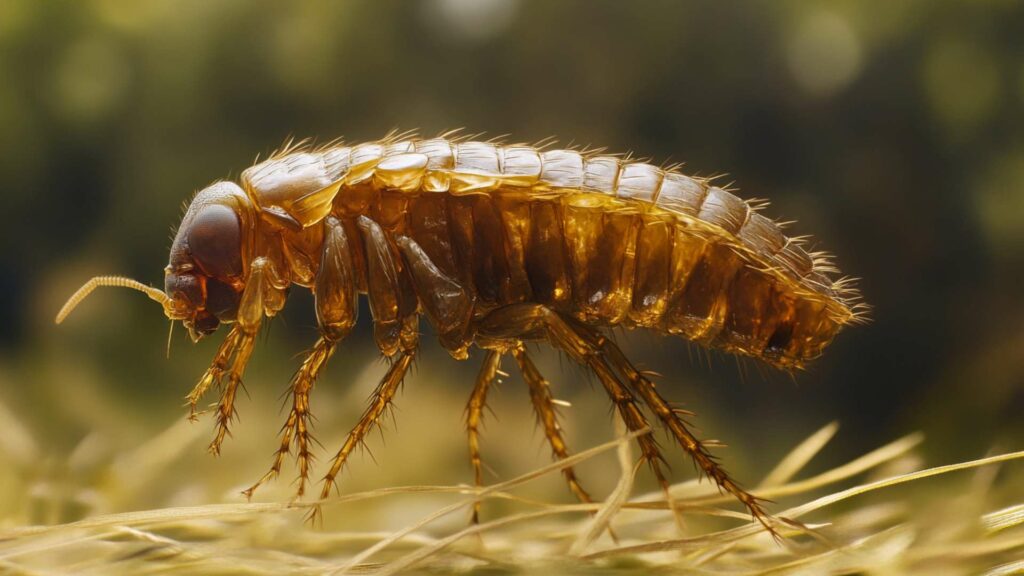
While it’s important to focus on eliminating fleas indoors, don’t neglect the outdoor spaces around your home. Fleas in your yard can easily find their way inside, hitching a ride on your furry friend or even on your shoes. To prevent this, keep the outdoor areas tidy by regularly removing debris like leaves or grass clippings, as these can create ideal breeding grounds for fleas.
Trim any overgrown shrubs or bushes near entrances to minimize the chances of flea infestation. Consider sprinkling baking soda in shaded areas where pets often rest or play to catch fleas from.
Fleas dislike the alkaline nature of baking soda and tend to avoid it, making it an effective natural deterrent. Just be sure to keep your pets away from the baking soda when applied, as ingestion could upset their stomachs.
Remember, prevention is always better than dealing with an infestation later on. By maintaining cleanliness and hygiene in your home, vacuuming regularly, washing bedding and pet accessories frequently, and keeping outdoor areas tidy, you’re taking proactive steps towards ensuring a flea-free environment for both you and your furry companions!
Treating your pets for fleas
Consultation with a veterinarian for appropriate flea control products
When it comes to tackling those pesky fleas on your beloved pets, seeking guidance from a veterinarian is crucial. These professionals have an in-depth understanding of flea control and can recommend the most effective products to address the issue. Whether it’s topical treatments, oral medications, or collars, veterinarians can assess your pet’s specific needs and prescribe the appropriate flea collar solution.
Remember, each pet is unique, so what works for one may not work as effectively for another. By consulting a vet, you ensure that the treatment plan is tailored to your furry friend’s health condition and overall well-being.
Importance of following instructions carefully
Once you have obtained the recommended flea control product from your veterinarian, it is essential to pay close attention to the instructions provided. These guidelines are designed to maximize effectiveness while minimizing any potential harm to your pet.
Whether it involves applying topical treatments correctly or administering oral medications at the right dosage, following instructions diligently ensures optimal results in combating fleas. Additionally, adhering to these directions helps prevent any adverse reactions to juvenile fleas that could be caused by improper usage.
Regular grooming to remove adult fleas and eggs from pets’ fur
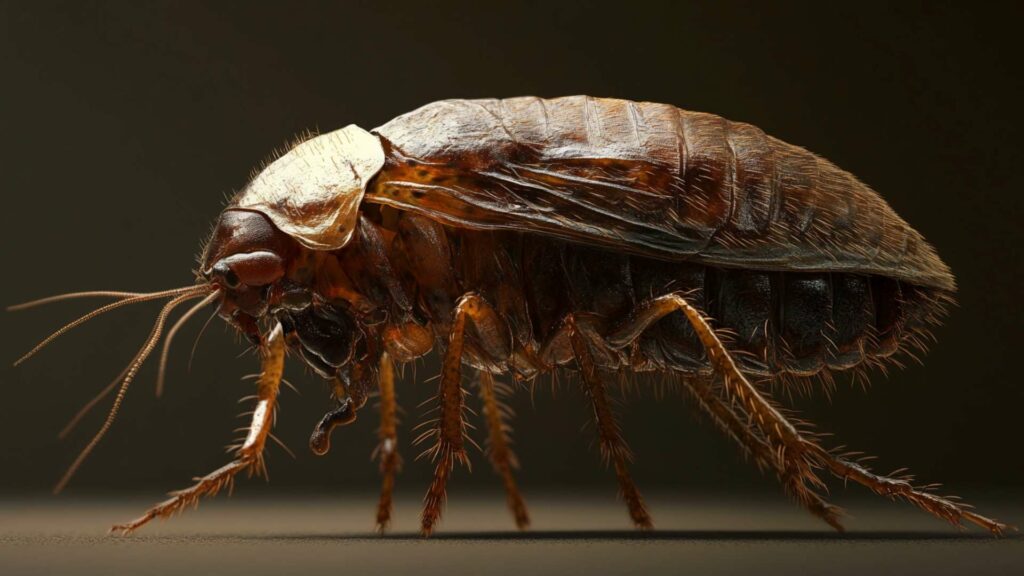
Grooming plays a crucial role in keeping our furry companions clean and healthy while also helping eradicate those unwelcome intruders – fleas! Regularly combing through your pet’s fur using a flea comb or specialized brush aids in removing adult fleas as well as their eggs or larvae that may be hiding within their coat. This process not only disrupts their life cycle but also eliminates potential sources of future infestations.
Make sure you focus on areas where these pesky critters tend to hide, such as behind ears, around the tail base, and in between the toes. By consistently grooming your pet, you significantly reduce the risk of flea bites, allergic reactions, and the overall discomfort caused by these persistent parasites.
Use a flea comb or specialized pet brush
When it comes to grooming your pets for fleas, having the right tools is essential. A flea comb or specialized pet brush is designed with fine teeth that effectively capture and remove fleas and their eggs from your furry friend’s fur.
These combs are designed to be gentle on your pet’s skin while still being effective at removing the pests. Start combing from the top of their head and gradually work your way down, ensuring you cover all areas of their body.
After each stroke through their fur, inspect the comb for any caught fleas or remaining eggs. Regularly cleaning the comb during this process will prevent reinfestation, kill fleas, and give you a clear idea of how well you’re progressing in eliminating those annoying critters.
Bathing with flea shampoo as recommended by the vet
Another valuable tool in combating fleas is using a suitable flea shampoo recommended by your veterinarian. This specially formulated shampoo not only kills adult fleas but also targets other stages in the flea life cycle, such as young fleas and eggs. Prioritize using warm water during bath time, as it helps drown and remove existing fleas more effectively.
Begin by wetting your pet thoroughly before applying an ample amount of flea shampoo along their body, carefully avoiding sensitive areas of flea population like eyes and ears. Gently massage the shampoo into their fur to ensure optimal coverage before rinsing thoroughly.
Remember to follow proper bathing frequency guidelines provided by your vet since excessive washing can dry out your pet’s skin. By following these steps for treating your pets for fleas diligently, you’ll be well on your way to curbing those irritating infestations and ensuring a happier home environment for both you and your furry companions!
Treating your home for fleas
Identifying areas where fleas might hide or breed
Fleas are crafty little creatures, and they can hide in places you may not even consider. To effectively eliminate them from your home, it’s crucial to identify these sneaky hiding spots.
Start by focusing on areas where your pets spend most of their time, like carpets, rugs, and furniture upholstery. Flea eggs and larvae tend to accumulate in these soft surfaces, making them prime breeding grounds for these pesky insects.
Additionally, don’t forget to check your pet’s bedding and resting areas. Pet beds are cozy havens for adult fleas and a hotspot for flea eggs.
Effective methods to eliminate fleas indoors
Once you’ve identified the potential hotspots for flea infestations in your home, it’s time to take action. One of the most effective methods is vacuuming with a powerful vacuum cleaner that has a high-efficiency particulate air (HEPA) filter.
Pay extra attention to nooks and crannies where fleas love to hide – think along the baseboards, under furniture cushions, and between floorboards. Regularly empty the vacuum bag or dispose of the contents outside immediately after each use to further prevent fleas reinfestation.
Another effective technique is washing infested fabrics in hot water or using steam cleaning techniques if appropriate for the fabric material. Flea larvae cannot withstand high temperatures; therefore, laundering infested clothing items such as bedding, blankets, and pet accessories can help eliminate both adult fleas and their offspring.
Application of insecticides or natural alternatives in targeted areas
In severe cases or persistent infestations despite other efforts taken, you may need additional measures like applying insecticides or natural remedies directly to targeted areas. Before resorting to chemical flea treatments found at pet stores or home improvement centers, be sure to read and follow the instructions meticulously. Insecticides formulated for flea control are usually available as sprays or powders.
Apply them to carpets, rugs, furniture upholstery, and any other areas where you suspect fleas might be hiding. If you prefer a more natural approach, there are several remedies that can help you repel fleas, or kill fleas without harsh chemicals.
For example, diatomaceous earth is a fine powder made from fossilized algae that can dehydrate and kill fleas upon contact. Sprinkle it in targeted areas and leave it for a few days before vacuuming it up.
Additionally, essential oils like lavender or eucalyptus can act as natural flea repellents when diluted with water and sprayed on infested surfaces. Remember to consider the safety of your pets while using any treatment method.
Keep them away from treated areas until the products have dried or dissipated to avoid potential harm. By employing these effective methods for treating your home for fleas, you’ll be well on your way to reclaiming a pest-free living space for both you and your furry friends!
Extra Measures for Severe Infestations
Professional Pest Control Services
When dealing with a severe flea infestation, it may be necessary to seek professional pest control services. While there are many do-it-yourself methods available for killing fleas, a professional exterminator can provide expert knowledge and access to more potent treatment options. These professionals have the experience and expertise needed to tackle even the most stubborn flea problems.
A professional pest control service will begin by conducting a thorough inspection of your home. They will identify areas where fleas might be hiding or breeding, such as carpets, rugs, furniture upholstery, pet bedding, and resting areas.
Once the extent of the infestation is determined, they will tailor their treatment plan accordingly. One common method used by professionals is targeted insecticide application.
They know which products are most effective in eliminating fleas at all stages of their life cycle, from eggs to adults. These insecticides are often applied using specialized equipment that ensures thorough coverage while minimizing any potential risks to humans and pets.
Fogging or Bombing the House with Insecticides
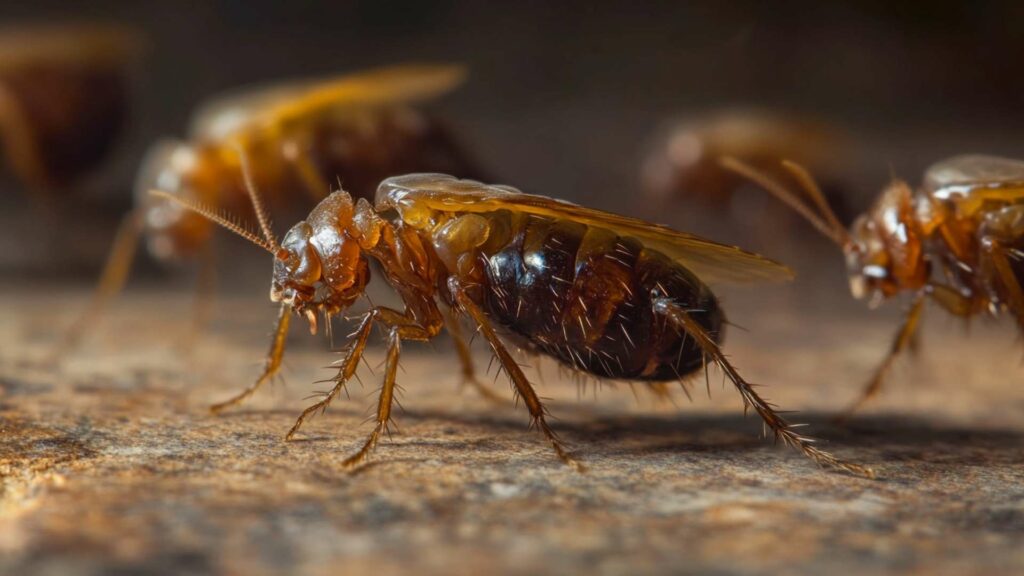
In severe cases where all other methods have failed or when immediate results are needed, fogging or bombing the house with insecticides can be an effective solution. This method involves using a flea fogger or flea bomb that releases a fine mist of insecticide throughout your home.
Flea foggers work by dispersing tiny droplets of pesticide into the air that settle on surfaces and penetrate crevices where fleas may be hiding. This method can effectively treat fleas and reach areas that may be difficult to treat manually.
However, it is crucial to follow all safety instructions provided by the manufacturer when using these products. Before activating a flea fogger or bomb, ensure that every living being (including pets) is safely outside the treated area.
It’s essential to cover or remove any exposed food, dishes, or utensils. Once the fogger or bomb has been deployed, leave the treated area and keep it sealed off for the recommended duration to allow the insecticide to take effect.
Afterward, ventilate the space thoroughly before re-entering. It’s important to note that fogging or bombing should be considered a last resort and used sparingly.
While effective at killing adult fleas present in your home, these methods may not eradicate all the fleas or eliminate any remaining eggs. It’s crucial to combine fogging with other flea control measures and maintain a diligent approach to prevent future reinfestations and kill adult fleas.
By seeking professional pest control services and considering fogging or bombing as an additional measure for severe infestations, you can effectively combat even the most stubborn flea problems in your home. Remember, it’s essential to follow instructions carefully and prioritize safety for you, your family, and your pets throughout the process.
Maintaining a Flea-Free Home
Regular Cleaning and Prevention
To ensure that your home remains free from fleas, it is essential to maintain regular cleanliness and implement preventive measures. Vacuuming your carpets, rugs, and upholstery at least once a week will help remove any flea eggs or larvae present. Pay special attention to areas where your pets spend most of their time, as these are hotspots for flea infestations.
Additionally, washing bedding and pet accessories in hot water will eliminate any fleas or eggs that may be hiding there. Don’t forget to keep outdoor areas tidy by regularly mowing the lawn and removing any debris where fleas might thrive.
Caring for Your Pets
Proper care for your pets plays a crucial role in preventing and eliminating flea infestations. Regularly groom your furry friends using a specialized flea comb or brush to detect and remove adult fleas and their eggs from their fur.
If you notice any signs of flea dirt or see live fleas on your pet’s skin, consult with a veterinarian immediately for appropriate pet treatment options. They may recommend topical treatments, oral medications, or flea collars, that effectively kill fleas at different stages of the life cycle.
Natural Remedies as Supplementary Solutions
In addition to commercial products available at pet stores and veterinary clinics, natural remedies can serve as supplementary solutions to combat fleas in your home. For instance, you can create a lemon flea spray by boiling sliced lemons in water and then allowing the concoction to cool down before transferring it into a spray bottle. Spraying this mixture on furniture upholstery (after testing on an inconspicuous area) can act as a deterrent against fleas due to the citrus scent they dislike.
Conclusion
Maintaining a flea-free home requires proactive measures such as regular cleaning, proper pet care, and supplementary natural remedies. By consistently implementing preventive measures like vacuuming, washing bedding, and keeping your pets well-groomed and treated for fleas, you can significantly reduce the risk of flea infestations in your home. Remember that early detection before fleas bite people first is crucial, as it allows for swift action against these pesky parasites.
With diligence and a combination of preventive methods, you can effectively rid your home of fleas and create a safe haven for both your family and pets to enjoy without worrying about allergic reactions or discomfort caused by flea bites. Stay vigilant and take pride in maintaining a clean, flea-free environment for your loved ones!
Banish Fleas with D-Termination: The Leading Pest Control Service in Las Vegas!
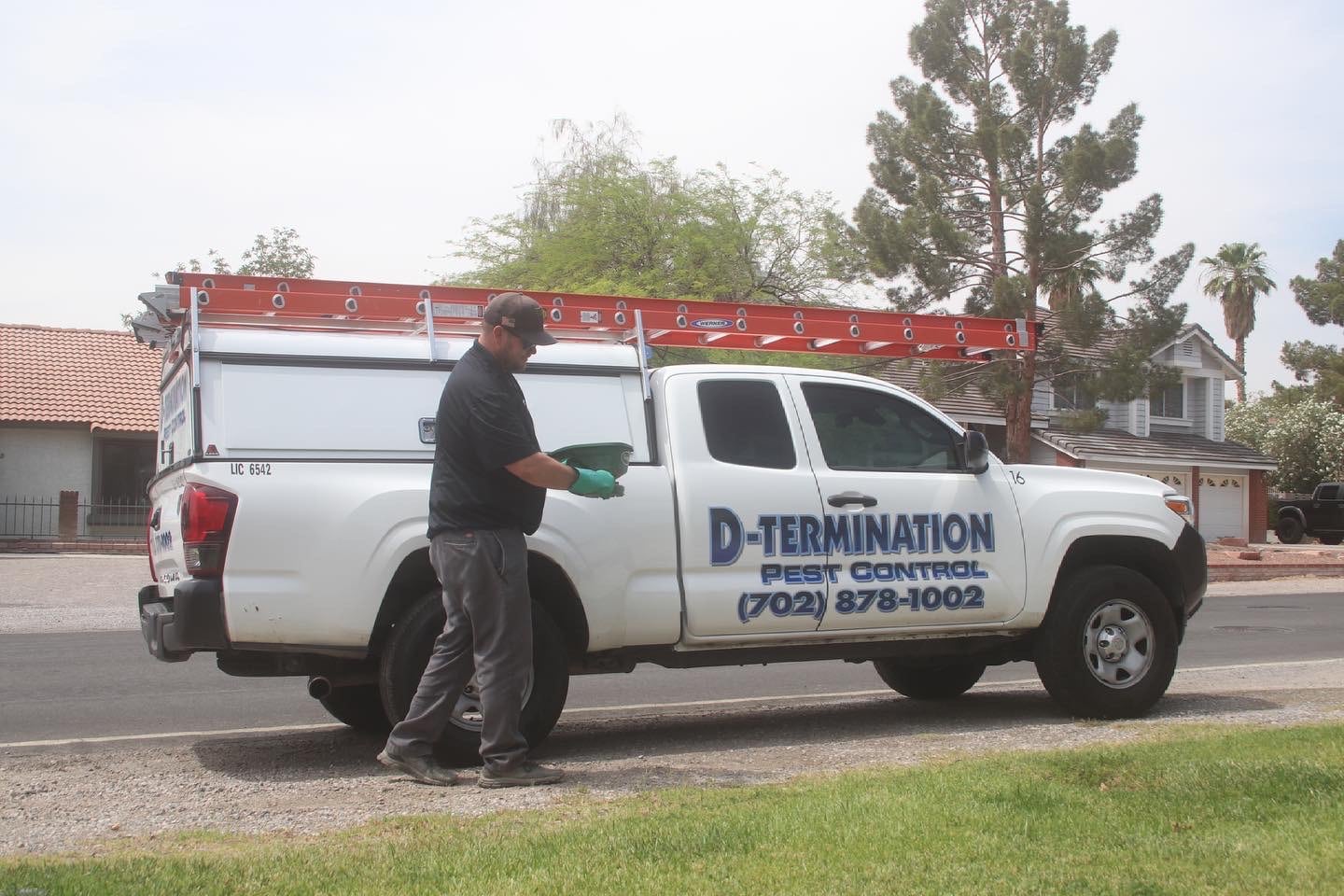
If you’re facing flea troubles at your Las Vegas property, D-Termination is your trusted ally. Our proficient team excels at eradicating flea infestations, bringing back serenity and contentment to your living space. Bid adieu to fleas—opt for D-Termination for efficient pest control today!
Reach out to us at 702-919-6310 or visit dtermination.com to schedule your flea control service and reclaim your premises from these bothersome pests.
Frequently Asked Questions:
To quickly get rid of fleas in your house, use flea sprays, vacuum regularly, wash pet bedding, and treat your pets for fleas.
Treating the interior of your house for fleas involves thorough cleaning, vacuuming, and using flea control products on both pets and the environment.
The time it takes to eliminate fleas in a house varies, but it often requires several weeks of consistent treatment and cleaning.
Some home remedies that may help kill fleas in the house include using diatomaceous earth, herbal flea sprays, and frequent washing of pet bedding.








